In this article, we would like to present you our findings on how water is used in food production on farms and from where farmers are getting water to irrigate their crops. In addition, very important and interesting questions for us were: do farmers have a way to save water and how difficult is it to get the water that is needed, to irrigate the crops? Also, we wondered how climate change affects water consumption on farms.
To answer all these questions we interviewed local farmers from India and Switzerland and were able to compare the water consumption in agriculture from both regions. All answers from the farmers have been summarized and supplemented with additional research by us.
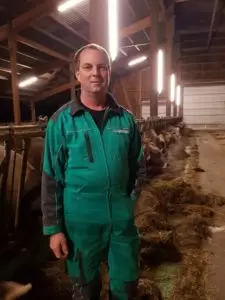

Farmer from Switzerland and farmer from India
Which cereal do you plant?
The main crop in Switzerland is corn, compared to India where it is the runner bean. Corn is a type of cereal that thrives in warm and sunny regions. Corn was brought from America to Europe in 1493 by Christopher Columbus. In as early as the 16th century the first cornfields were being farmed in Spain. In Switzerland, corn has been farmed since the 17th century in the Rhine Valley in St. Gallen, where it thrives particularly well due to the warm and humid climate and the alpine foehn (=Alpenföhn) [1].
In this short video you can follow the development of maize

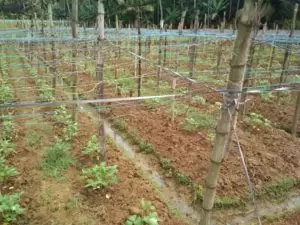
On these photographs you can see runner bean plants
Where does the water come from for the crops?
Water is a precious commodity (=kostbares Gut) and is indispensable for agricultural production. Switzerland was previously considered the moated castle (=Wasserschloss) of Europe. This is due to our water reserves in the form of glaciers in the mountains and the groundwater [2]. We are fortunate in comparison to other countries. In Switzerland there is ample rainfall, therefore there is no need for additional water irrigation. In Kerala, India, they also do not need to supplement their water supply for agriculture as they have access to a nearby lake, named Vellayani. The farmers get enough water from this lake.
How does climate change affect agriculture?
Today, 40 percent of the water flowing out of Switzerland comes from melting snow. With climate change, this percentage may fall to 25 percent by 2085. This is because the snow line rises, due to rising air temperatures, by 150 meters per degree of warming. Therefore, less precipitation (=Niederschlag) is stored as snow with the result that the precipitation flows more directly [3]. Weather extremes are becoming more common, and in respect to maize, the breeding of new varieties is required, for example types with dryness compatibility. Certain fruit and vegetable crops are increasingly covered so that the weather risk is reduced. In Kerala the problem of excessive rain is leading to a major reduction in the yield. For example, the flood that affected Kerala last year caused a total agricultural loss of 6,281 crore Indian rupees and a loss of 25,138 tonnes of spice production [4].
Is there a way to save water in agriculture?
In Switzerland and also in India the best way to purpose watering is with drip irrigation (=Tröpfchenbewässerung) thereby avoiding the spray of water into the air.
Interview with a Professor of Agriculture
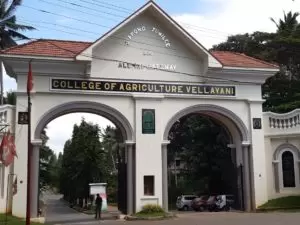
Fortunately, we had the opportunity to interview a Professor of Agriculture from India and although we did not have the same possibility in Switzerland, here are our results.
The major crops of Kerala are rice, banana, coconut and tubers like yams. These crops are the most subjected to toxicants. Rice crops are cultivated two or three times per year, which leads to the depletion of essential nutrients in the soil, hence it becomes impossible to cultivate without using additional supplements. The adverse effects of the excessive use of fertilizers (=Düngemittel) in farming are the increased concentration of urea and nitrogen (=Stickstoff) in the soil. The ammonia (=Gas) involved leads to an increase in temperature leading to pollution. Nitrogenous fertilizers dissolve in water intercalate and mix with groundwater, this is termed as percolation. As decontamination is not possible for groundwater it leads to serious issues when pumped out for irrigation. The adverse effect of groundwater pollution is that the percolated water is used for the irrigation of photo crops which absorb (=aufnehmen) large quantities of nitrogen and these crops are harvested and fed to lactating animals, for example cows. In turn the lactating mother, passes this onto her young, which leads to blue disease.
One of the effective solutions is to get the maximum output of the fertilizers used. Normally only 25 to 30 percent of nitrogen is absorbed when fertilizers are applied. There are several measures that can be used to increase the absorption of nitrogen. One measure is to mix urea (=Harnstoff) with moist soil (=feuchte Erde). This absorbs the nitrogen and fixes it in the soil. The second possibility is to mix urea with neem cake, which contains many alkalis. This helps to extend the availability of nitrogen over a long period of time. The third and last possibility is to spray the fertigation-fertilizers soluble (wasserlösliches Düngemittel) onto the fields together with the irrigation water. This helps to save water, time and labour.
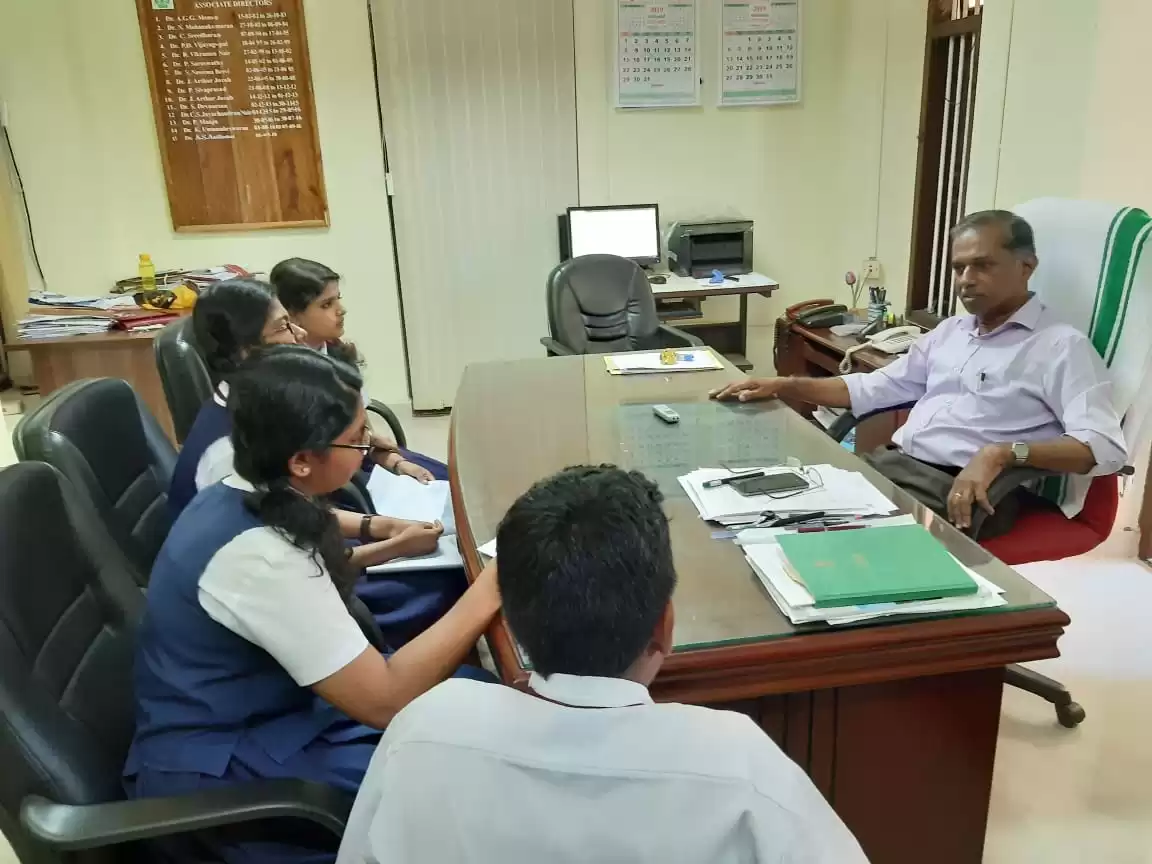
Our conclusions
To sum up, the use of water in agriculture is a very big problem. Most of the water in the world is not consumed domestically. Agriculture uses about 70 percent of the water. This fact is extremely fascinating. Our opinion after these findings from the interviews has changed. We have to save water. It is a scarce commodity and we have to pay attention to its usage.
In the beginning we thought that the watering on farms was not that common. We also imagined that most countries, with the exception of Africa, did not have a Problem with water. If we think of how water will be used in 100 years in agriculture, we feel very concerned. Because of the climate change the farmers will need to water their crops more than today. It will not rain as often and when it rains the rainfall will be much weaker. The farmers have confirmed our suspicion of water scarcity in the future with our survey.
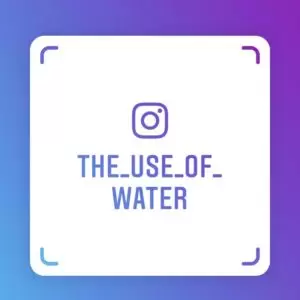
Because of all these discoveries, we decided to create an Instagram account on which we want to share how important it is to take care of our water. So, if you are interested in the topic of the water supply in agriculture follow us on Instagram the_use_of_water
Our experiences
As we have already mentioned, we had the opportunity to cooperate with India. Except for a few misunderstandings, our communication was excellent. Once our collaboration was established, we opened a group chat on WhatsApp. We exchanged ideas, shared our progress and sent each other pictures. Video chats were also a very helpful option. We made good progress and all members tried to complete the tasks on time. Of course there were also some technical problems. The Internet repeatedly caused us difficulties in chatting. Also, there is a noticeable time difference between Switzerland and India. But all in all it was a very positive experience.
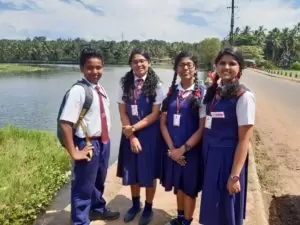

Team from India and team from Switzerland
Sources
In addition to the information we have taken from the interviews, we have supplemented our text with information from the following pages:
[1] Mais, (huebeli-kallnach.ch), Hübeli Kallnach, unspecified date
[2] Wasser, (sbv-usp.ch), anonymous, unspecified date
[3] Klimaänderung und Hydrologie, (naturwissenschaften.ch), Andres Jordi, 2012
[4] The Times of India, (timesofindia.indiatimes.com), anonymous, unspecified date
We also used google maps.
The photos are mostly self made and we own all rights for all the pictures.
You can find more useful information about water on the following pages:
Keine Wasserknappheit trotz Gletscherschmelze, (ethrat.ch), Kommunikation ETH-Rat, unspecified date
Schweizer Wasserverbrauch ist zum grössten Teil «importiert», (infosperber.ch), anonymous, unspecified date
Verheerende Überschwemmungen, (zeit.de), anonymous, unspecified date
EcoWatch, (ecowatch.com), anonymous, unspecified date
Water Conservation Tips, (nationalgeographic.com), anonymous, unspecified date
Remember: Water is the driving force of all nature
Team Zurich: Dharany & team
Team Kerala: Reshma & Ashish
☷ See the project teams here »
☵ Some words about the contributions »
☴ Our sponsors and partners » (the-horse.education)
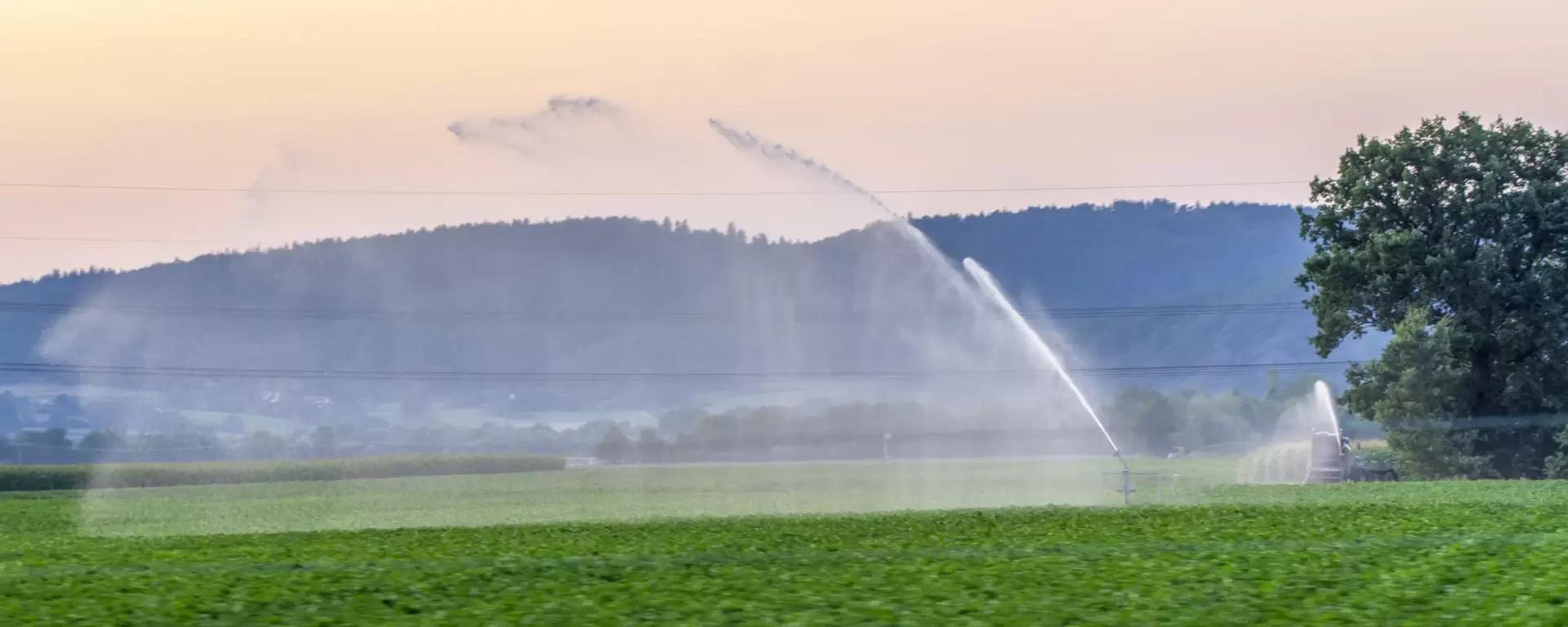
Unbelievable! What an informative and exciting article. I found it incredibly exciting to have a different perspective on water supply in agriculture, especially the comparison with India.
The article really captivated me. I only realized how close and critical this topic is when I read the article. We should really be concerned about how we use water in agriculture.
You have really done a super project.
Hello Lars and Dharany
Your post is really interesting. Well done!
You have chosen a highly important topic, which will also continue to concern us in the futur. We need to change something and try to save water and I hope that this will happen as soon as possible. It’s great that you did a collaboration with some students from India.
Thank you for your post.
Hi guys
I am really impressed of your project. You guys did really a great job. It was very interesting to read about water supply in agriculture. I learned a lot of new things about this topic. I am also a bit worried what will happen in our future because water is very important for the humansbeings. When you compare Switzerland and India there is a big diffrence how water is used for agriculture. In my opinion we should try to pay more attention to our environment.
With kind regards
Cindy
We like your cooperation with India. It’s interesstiong to read their point of view copared to ours. I never thought about water supply in agriculture but we should be worried. Thank you for your post.
Wow, I have read your text and I don’t realize this issue until I read it.
Congratulations for all your work.
Thank you for making us open our eyes.
I really love this post. It’s important to bring up this subject…
I think it’s great that you have made the comparison with Switzerland and India. The fact, which the farmer mentioned in the interview, that new maize varieties must be bred soon, worries me a little. Are we already that far advanced with climate change?
Thanks a lot for spreading your knowledge and additional facts via Instagram and sharing them with the world! You have done a fantastic job!
Amazing work! Climate change will have such a significant impact on multiple aspects of life, including on farmers. We need to consider the impacts climate change will have on all industries.